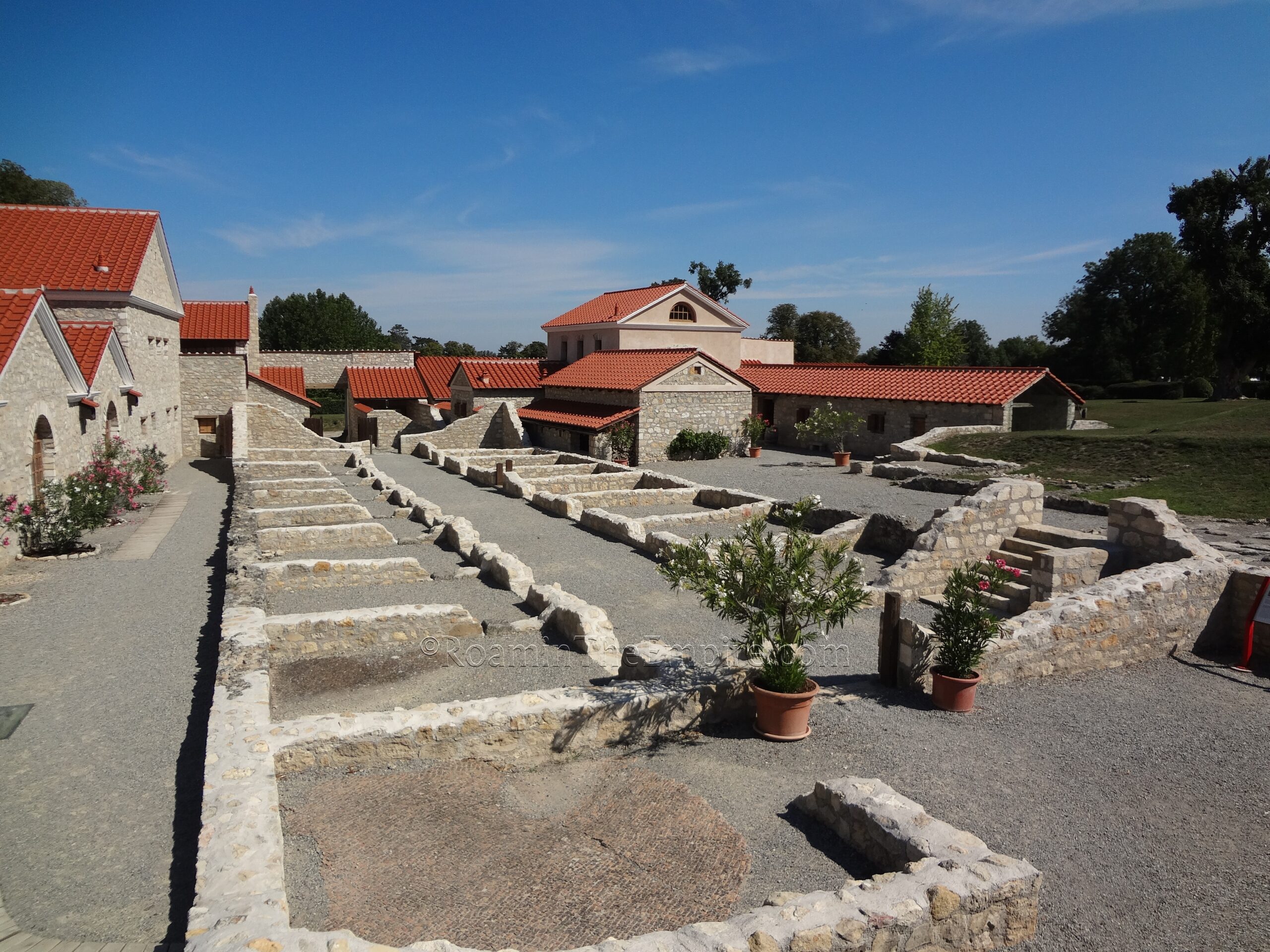
Continued From Carnuntum, Pannonia Superior – Part II
Continuing through Römerstadt Carnuntum, to the west of the Villa Urbana are the public baths. Between the two there is the so-called valetudinarium area that has not been reconstructed except for the entrance off the portico, but rather have been left as conserved after excavation. A wooden structure seems to have been built here in the 1st century CE, that was then replaced by a wood and stone structure right around 200 CE. Finally in 300 CE the entire building was completely rebuilt in stone, which is the phase that remains displayed today. The actual usage of the site as a valetudinarium, a military hospital, is unlikely given the fact that it is located in the civilian settlement, but rather it was likely some kind of storage area or perhaps a gathering spot.
The adjacent baths have three phases of construction associated with them. They seem to have initially been constructed somewhere around 124 CE, around the time the city was given municipium. The baths then underwent significant restoration and renovation in the 3rd century CE. The latest phase of construction is dated to the early 4th century CE, and it is that phase upon which the present reconstruction was based.
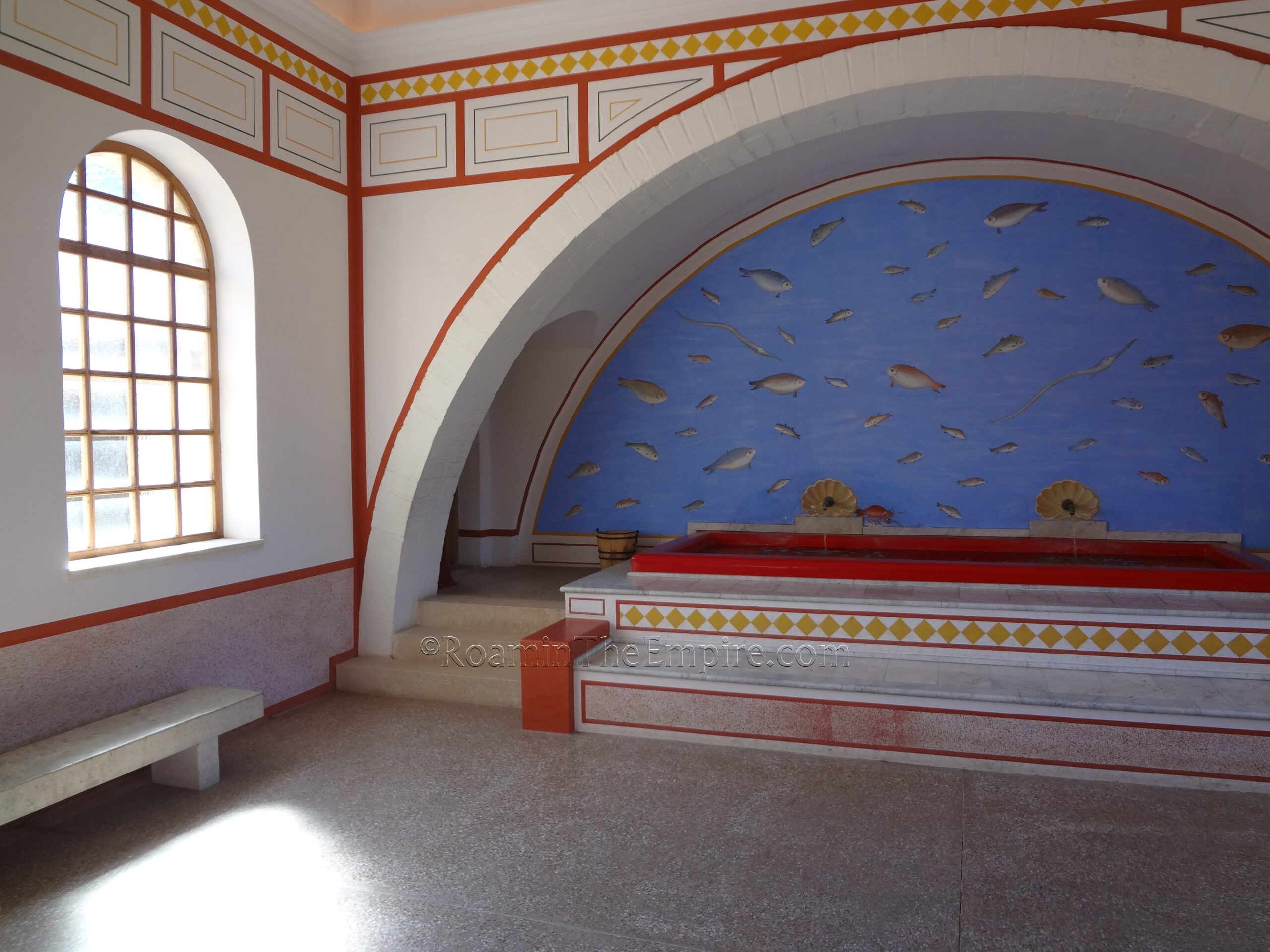
Given my baseline less than enthusiastic general view of reconstructions, the baths are really pretty impressive. When I first visited in 2012, these were some of the first remains I had seen reconstructed to this point, and it was impressive then. But, it has actually gotten more impressive with time after having seen other reconstructions and appreciating what they seem to have achieved here that others haven’t. And that is in creating a more or less functional reconstruction of the baths. The warm and hot rooms are actually heated and the temperature changes can be felt going from room to room. There is water filling the basins and it is more or less suited to the respective rooms. And all this seems to have been done using the original mechanisms, rather than modern. The praefurnia are obviously in use and supplying the heating to the necessary areas, as is the water distribution through the complex (though it is obviously brought onto the site via modern means). It is well-decorated for the most part, though some of it seems a little incomplete.
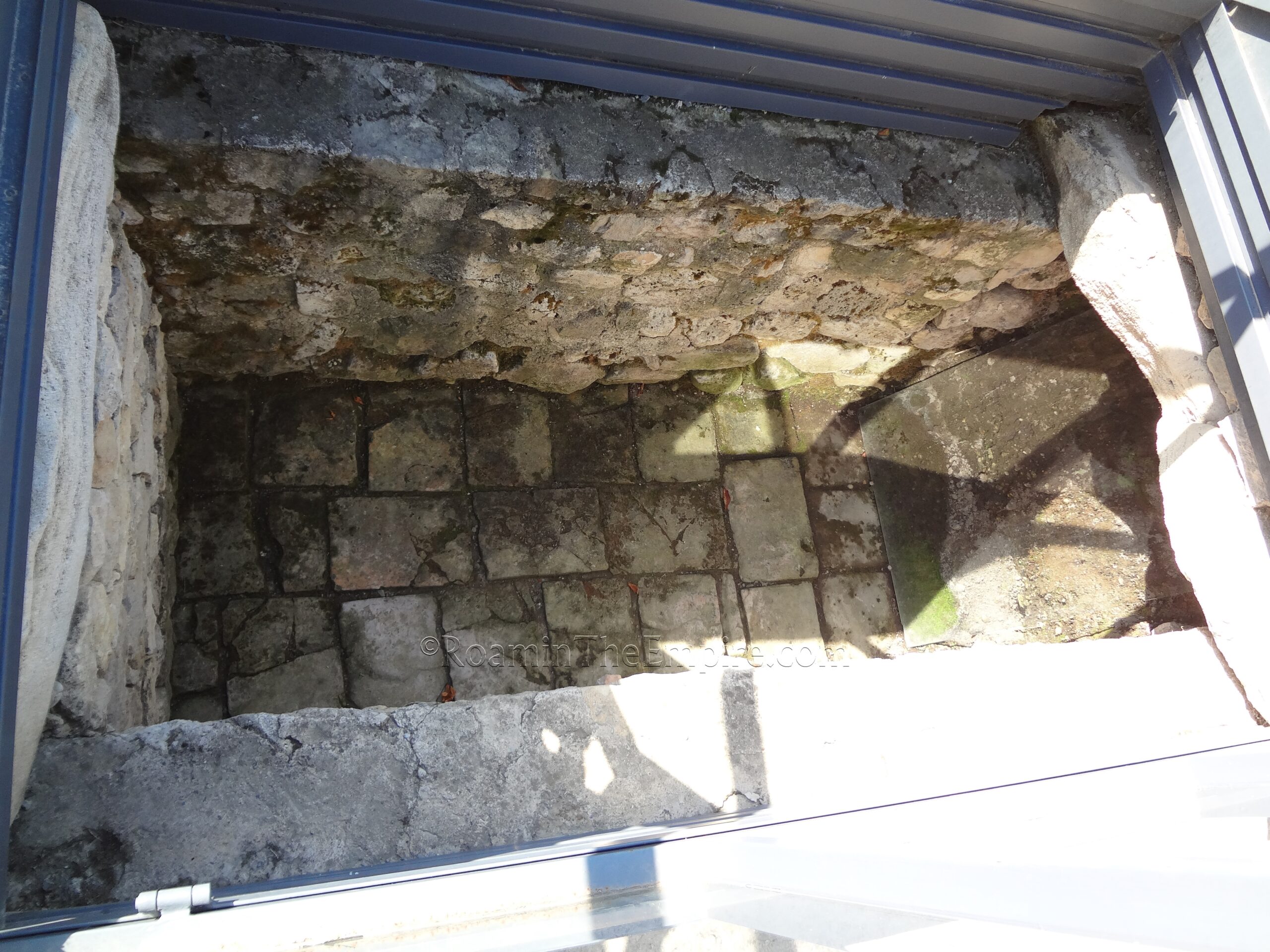
This rounds out the remains within the archaeological park, with another cardo being present on the west side of the baths. At this intersection is an excavated part of the sewer system running along the decumanus. A good hour and a half to two hours can be spent at the site, depending on how into the reconstructions one gets. It’s not an incredibly expansive site, but they do pack a lot into the space. There are lots of informational signs present throughout with information in English, German, and Slovak.
Aside from the previously discussed remains, a number of other sites have been excavated in the area immediately around the archaeological park, however, none of those seem to be currently accessible or visible. The next area of interest is about 1.3 kilometers to the east along the main road through town, which runs right in front of the archaeological site; Hauptstraße. At essentially the eastern extent of town is the Museum Auxiliarkastell Petronell-Carnuntum (also called the Kulturhaus), located at Hauptstraße 78. I’ve never been in it because it was closed both times I visited. The stated hours are Saturdays, Sundays, and public holidays between May 15 and October 31st, from 10:00 to 17:00. Admission is free with a suggested donation. It is apparently a modest museum with a couple rooms focusing on various aspects of the city including water and funerary practices (with a collection of about a dozen tombstones) as well as information on the auxiliary camp which was located adjacent to the museum in the neighborhood to the west, and gives the museum its name.
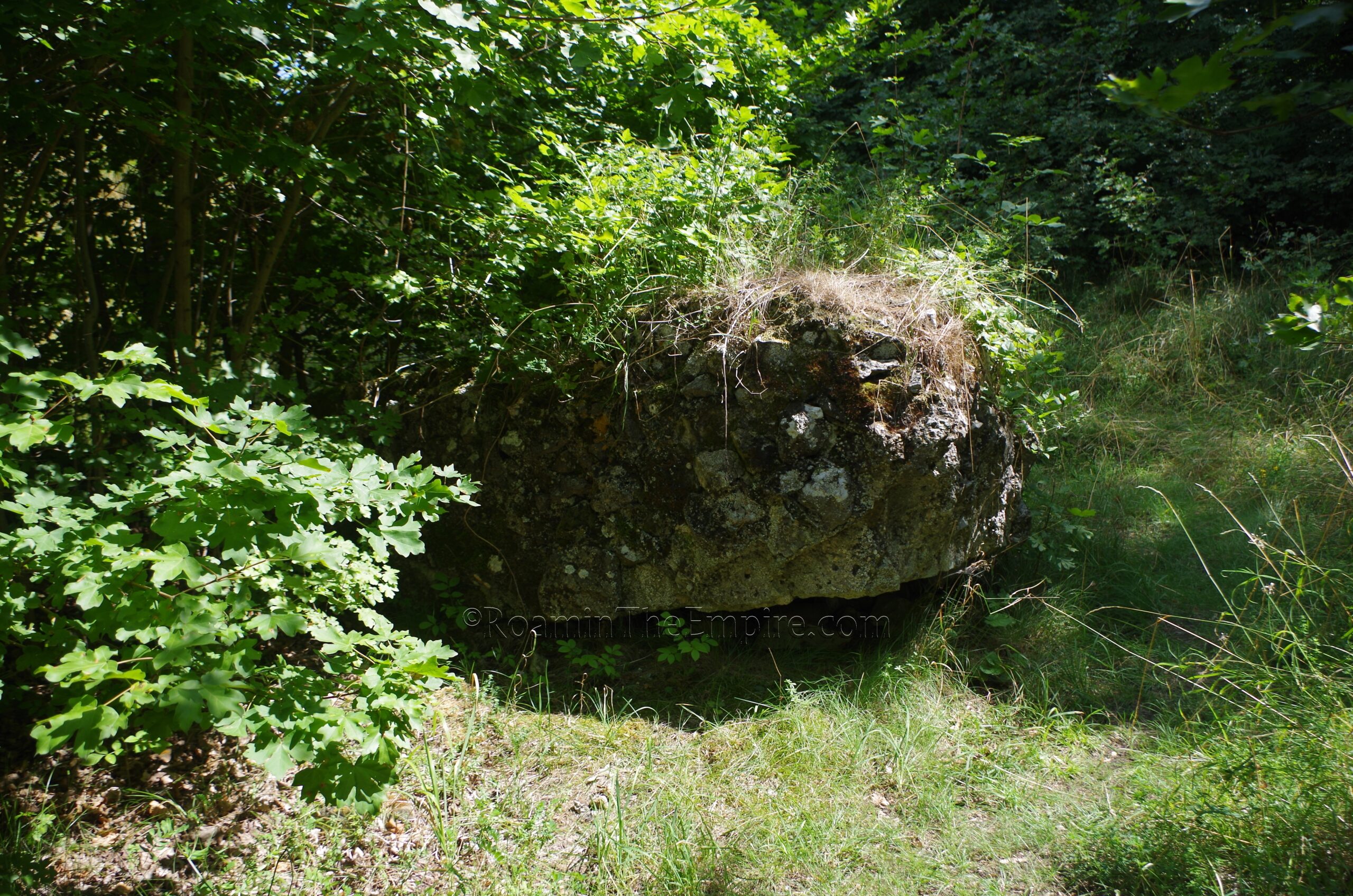
Continuing on for about 1.5 kilometers eastward on Hauptstraße, which turns into Wienerstraße at some point, are the remains of the eastern gate of the legionary camp. There’s a large sign on the south side of the road that implies the presence of the gate remains, but doesn’t actually direct where they are. When the vegetation is sparse, it can be seen from the road, but in the summer it can’t, and a small trail leads down off the road to the southeast where the remains of the eastern gate of the camp are. Effectively, the foundations of a tower exist here, but in the summer it is quite overgrown and really only bits and pieces of the masonry can be seen. Again, during the seasons in which the vegetation is less dense, it is a little easier to see. Though the shape of the legionary castrum can be seen in the physical landscape to some degree, these bits of the gate area are all the tangible remains of the structure that can be observed by visitors.
The final archaeological area of ancient Carnuntum is just about 160 meters farther down the road to the northeast at Wienerstraße 52; the Amphitheater Militärstadt, military amphitheater. The military amphitheater is open the same hours as the archaeological area; 9:00 to 17:00 daily between mid-March and mid-November. Admission is part of the combination ticket for the Römerstadt Carnuntum and the archaeological museum that costs 12 Euros.
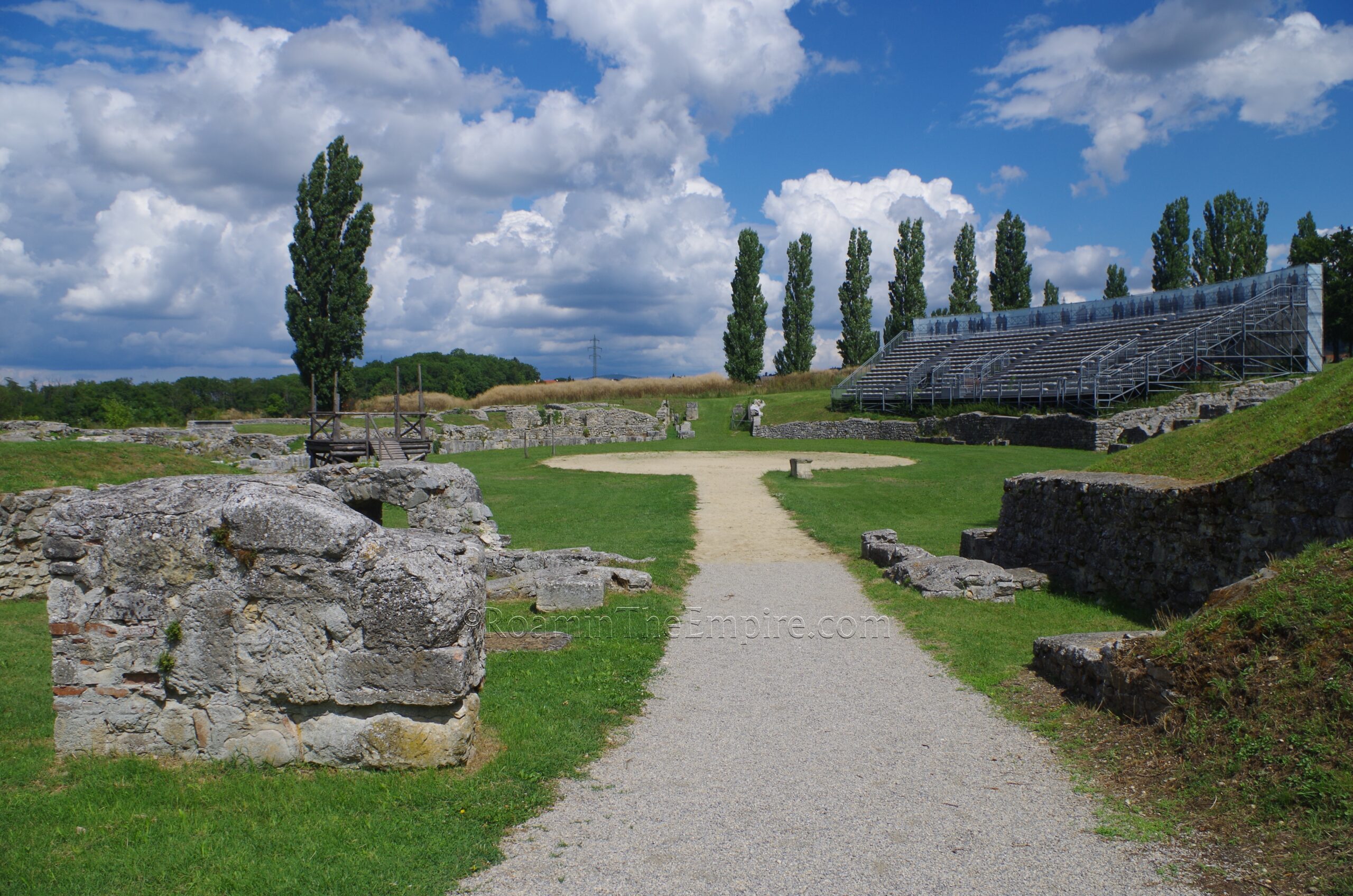
Carnuntum is one of just a handful of settlements to have two conclusively identified or suspected amphitheaters. The original military amphitheater was a wooden construction dating to about the middle of the 1st century CE. Not long after that, circa 70 CE, the wooden amphitheater was replaced by a more permanent stone structure. It underwent further renovation and reconstruction in the 2nd century CE. Noticeably smaller than its civilian counterpart, the military amphitheater is estimated to have held about 8,000 spectators; just over half the upper estimation of the civilian amphitheater.
There’s a small museum of sorts on site that has a few objects associated with the gladiatorial contests that have been found in the city, though not necessarily at the amphitheater. Some recreations of gladiator attire are also displayed. The military amphitheater is a bit more completely excavated than the civilian, but consequently looks a little sparser without the earthen mounds in the seating giving some sense of monumentality. Two features of particular note are on the southwest side of the amphitheater, flanking the entrance path into the structure. On the north side of the path are the remains of a bulbous sort of masonry projection that served as an animal holding area, as the amphitheater did not have a substructure to hold them. On the south side, and not especially clear in the presently exposed remains, was once a sanctuary of the goddess Nemesis, who is often associated with gladiatorial contexts. This sanctuary seems to be a little bigger than those typically associated with Nemesis within amphitheaters.
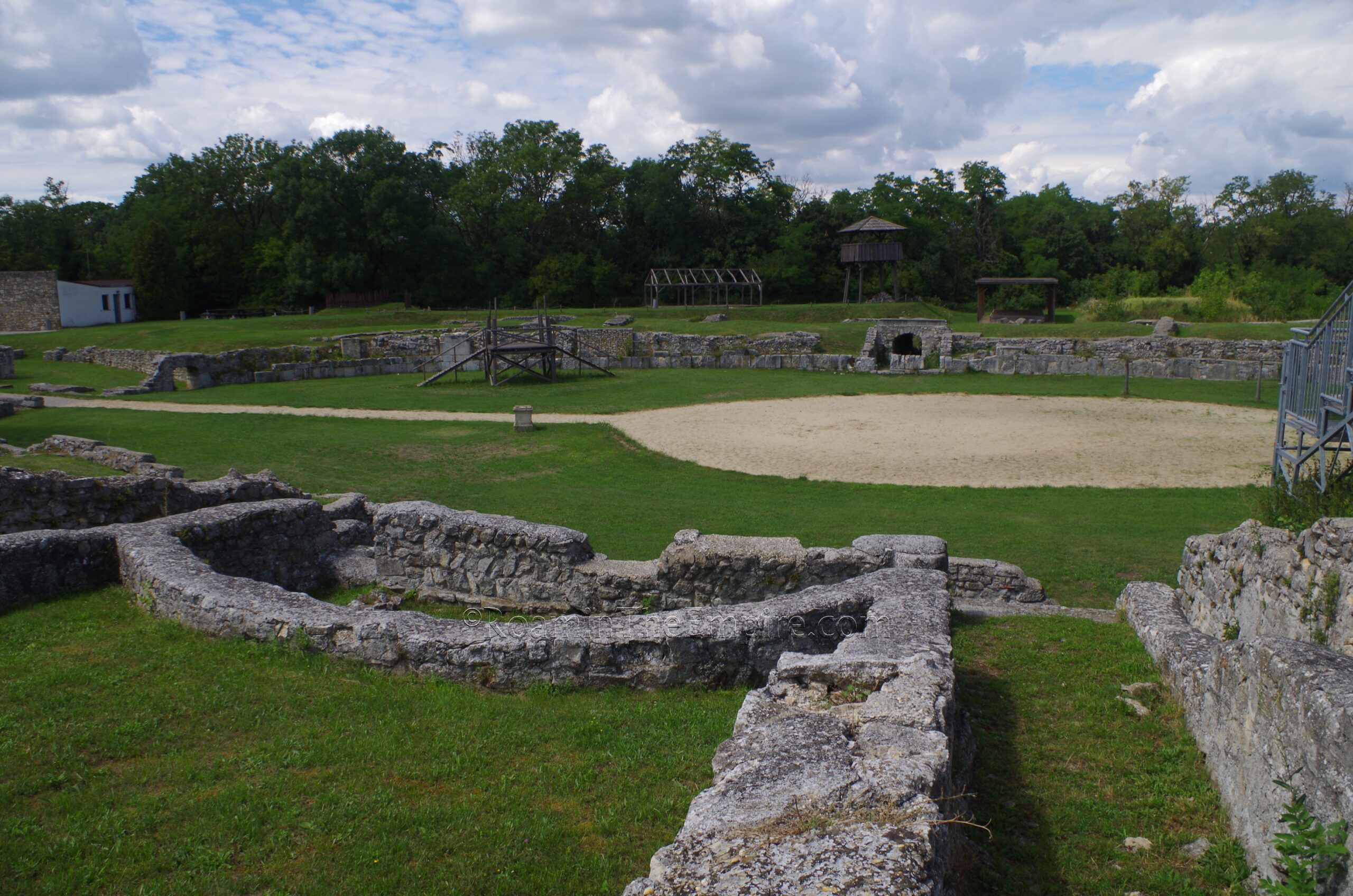
Not a whole lot of seating remains, and even many of the supporting structures are no longer standing. In the center of the arena on the south side, though, adjacent to the modern metal bleacher seating erected on this side of the amphitheater, are the remains of what is referred to as the governor’s box, a protected seating area broken out from the rest of the seating for important officials, dignitaries, and guests. It’s clear that there is a little more monumentality to this area even with some columns embellishing the decoration. There are a few informational signs on site as well as a sizable parking area for those arriving by personal vehicle.
A little to the east of the amphitheater are the outskirts of Bad Deutsch-Altenburg, and the road can be followed into the center of the town on the way to the archaeological museum. In the center of town, on the Hauptplatz, the intersection of the main north-south and east-west streets through Bad Deutsch-Altenburg, on the south (southwest) corner of the intersection is a modern column with a modern statue of an enthroned Jupiter atop it. According to the inscription (displayed in English, German, Italian, and Slovak on each of the four sides of the base), this monument commemorates the area of a large cult complex dedicated to Jupiter Optimus Maximus Karnuntinus, a local aspect of the god associated with the city. The cult complex was located on the Pfaefenberg Hill, the hill to the east that is almost completely obliterated by large-scale quarrying activities.
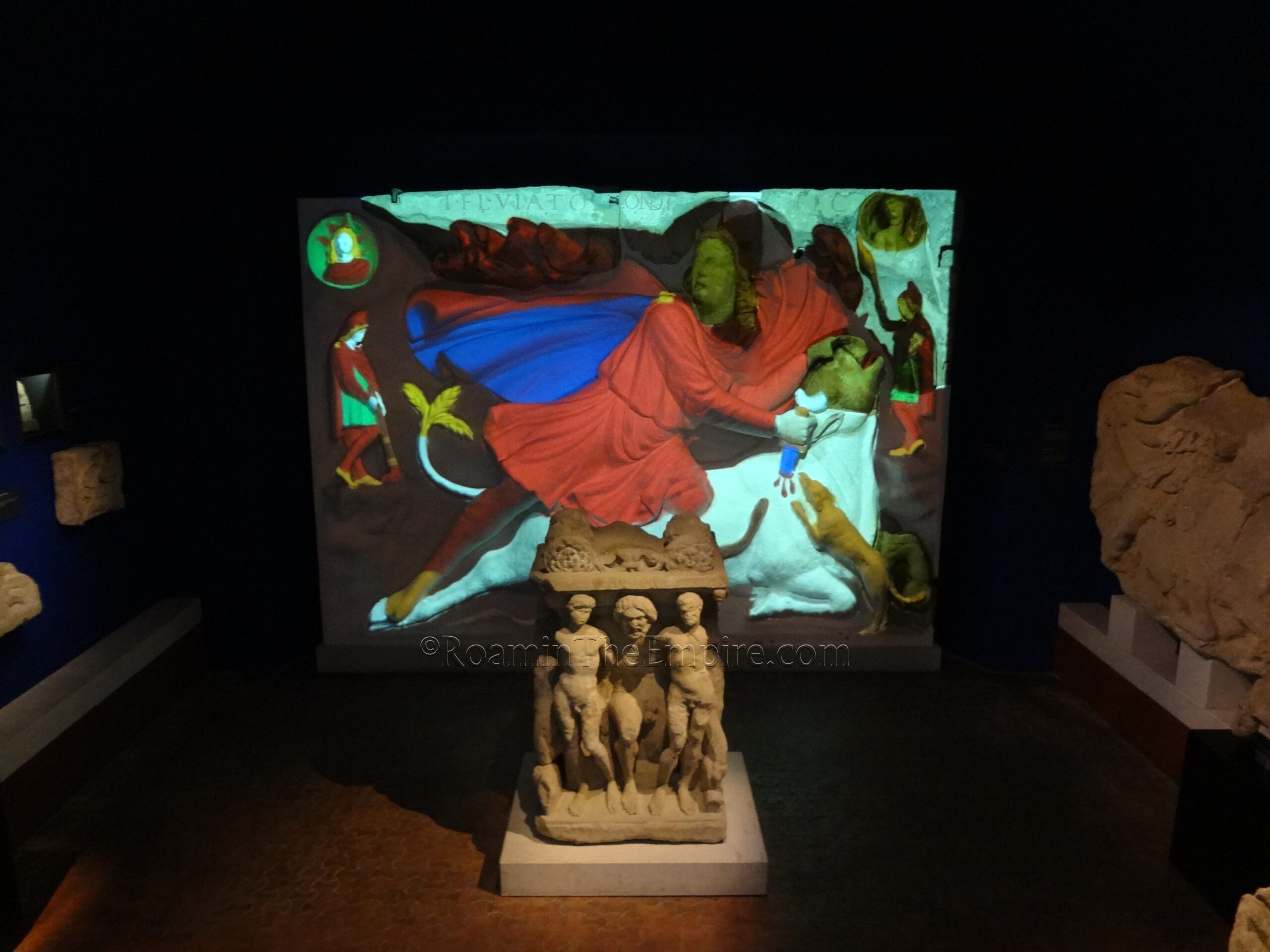
Heading north from here along Badgasse for 650 meters arrives at the final stop, the Museum Carnuntinum, located at Bagasse 42. Like the archaeological area and the military amphitheater, the museum is open from mid-March to mid-November every day between 9:00 and 17:00. It is also part of the 12 Euro combination ticket that gives entry to all three attractions.
The collection of the museum is made up primary of objects found in the civilian and military settlements of Carnuntum. Not completely, though. There are also some objects from the surrounding areas, a bit further afield. One of the most interesting aspects of the museum, I thought, was the great collection of objects from mystery cults; particularly those of Mithras, Jupiter Dolichenus, and Jupiter Heliopolitanus. One of the first rooms contains a huge Mithraic tauroctony with a color reconstruction projected onto the relief. Other reliefs and altars associated with the cult adorn the room. Diana Nemesis is also well represented with objects recovered from her sanctuary connected with the military amphitheater.
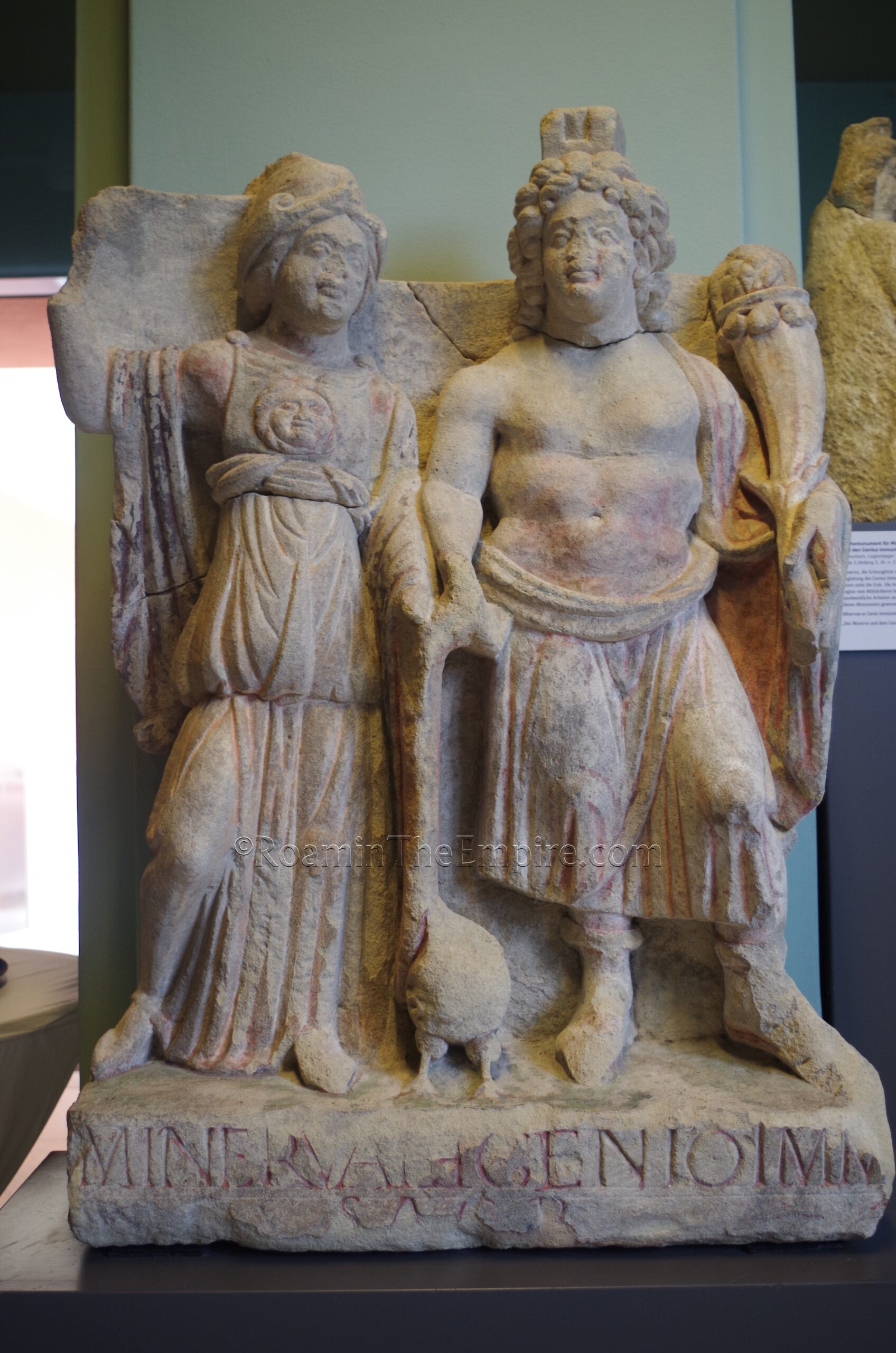
Given the legionary castrum of Carnuntum, there is also a very healthy collection of objects associated with the military occupation. Bits of weaponry, armor, and other objects associated with the army as well as inscriptions specifically noting the presence of the legions and individual soldiers attached to these legions that occupied the fort. The museum took me about an hour and a half each of the times I visited. The one drawback to the museum is despite the fact that everywhere else, nearly all the information was available in English and German, and also often in Slovak, all information within the museum was solely in German. Of course, being Germany, that’s to be expected, and I’ve certainly been to many museums that only offered information in the native language. But given that the additional translations were available at almost every other point of interest for ancient Carnntum, it made it feel like the museum was a little bit disconnected from everything else. It’s still a great museum with lots fantastic objects and a decent amount of information if you’re familiar with German.
Carnuntum works well as a day trip from Vienna. Taking the train out, seeing all the sites, and taking the train back easily fits within a day.
Sources:
Ammianus Marcelinus. Rerum Gestarum, 30.5.
Eutropius. Breviarium Historiae Romanae, 8.13.
Grant, Michael. A Guide to the Ancient World: A Dictionary of Classical Place Names. New York: Barnes & Noble Books, 1997.
Jerome of Stridon. Chronicon, A178, A308.
Pliny the Elder. Historia Naturalis, 4.25.1, 37.11.
Sedlmayer, Helga. Large City Baths of Colonia Carnuntum (Pannonia Superior/Austria): History Deduced From Waste. Archeologia Mosellana, Vol. 10, 2018.
Smith, William. Dictionary of Greek and Roman Geography. Walton & Murray, 1870.
Stillwell, Richard, William L. MacDonald, and Marian Holland. McAllister. The Princeton Encyclopedia of Classical Sites. Princeton, NJ: Princeton U Press, 1976.
Unknown. Historia Augusta, Severus 5.
Velleius Paterculus. Historiae Romanae, 2.109.1.


